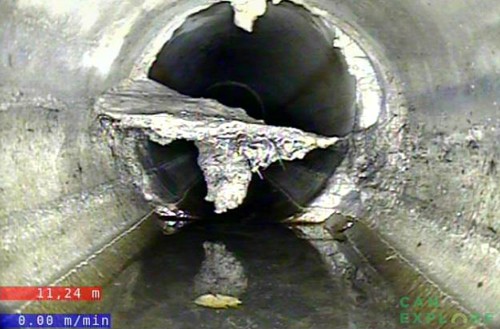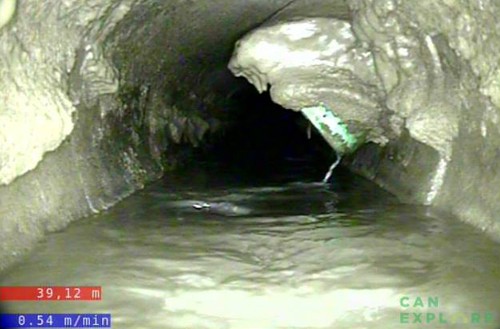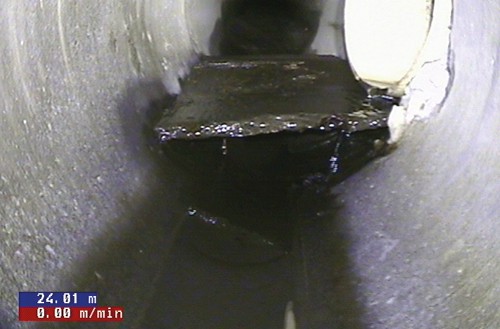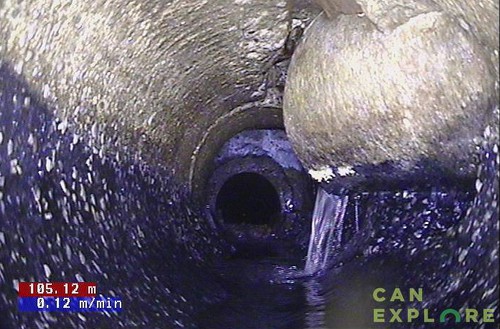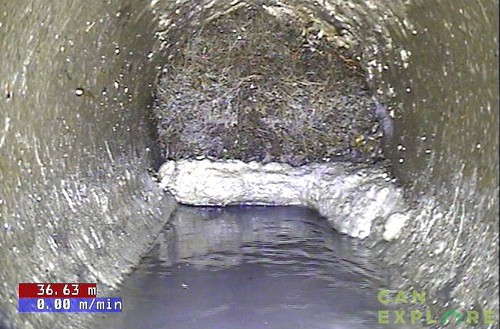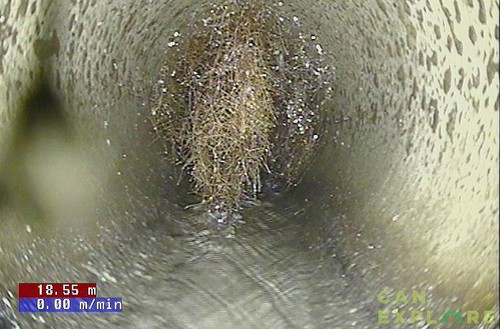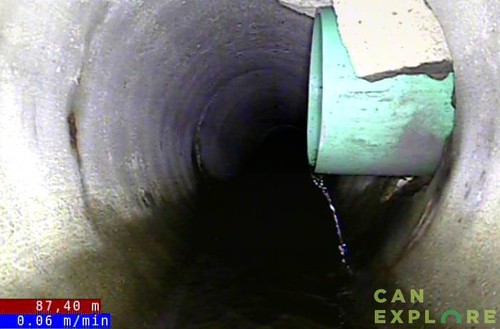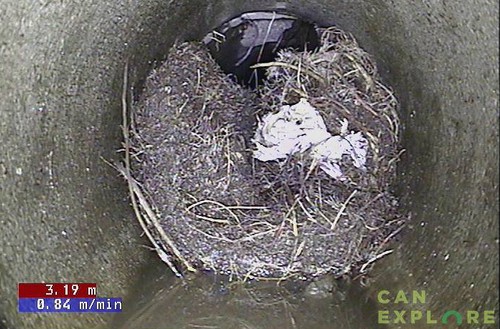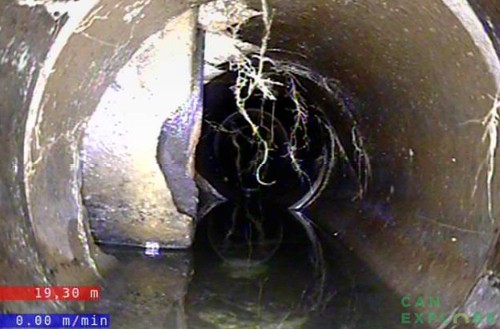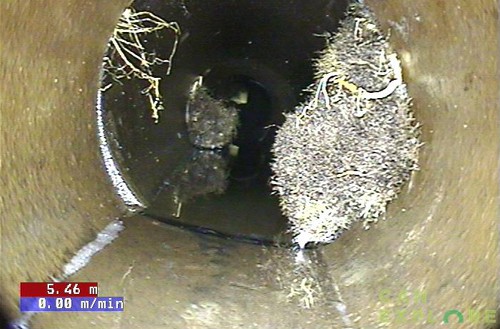Since 2014, Can-Explore has been assisting municipalities in the proactive management of their sanitary and storm sewer networks through camera inspection services. Our team, comprising water engineers, analysts, and skilled operator technicians, uses cutting-edge technologies to diagnose the condition of pipelines, prevent costly malfunctions, and optimize the management of underground assets.
Can-Explore offers a comprehensive range of specialized solutions that ensure the performance, durability, and compliance of infrastructures to maintain reliable and functional networks.
1- What is sewer inspection by camera
2- Why inspect sewer networks by camera – Benefits and applications
3- How inspection works – Structural defects and operational issues
4- When should you inspect your pipelines
5- Our tools
6- Inspection of submerged pipelines
7- Floods and climate change resilience
8- Complementary services for efficient sewer networks
9- Standards, reports, and additional documentation
10- Quick quote request
11- FAQ
What is sewer inspection by camera?
Sewer inspection by camera is a non-intrusive and non-destructive inspection method used to examine the interior of underground pipes to assess their condition. Typically preceded by cleaning, it involves inserting a self-propelled camera directly into the sewer network pipes.
Pioneer in cleaning and camera inspection services for sanitary and storm sewer networks since its inception, Can-Explore has built its reputation on this founding expertise. With our recognized methods and refined innovations over the years, our experts can effectively diagnose the condition of pipes and plan targeted interventions that ensure the durability of municipal and industrial sewer networks at lower cost.


Above, an inspection before/after cleaning.
Why inspect sewer networks by camera?
Camera sewer inspection is a method used to identify structural and operational defects in sanitary and storm sewer pipes. It is crucial for the proactive management of sewer networks, preventing costly breakdowns, backflows, and emergency interventions that can paralyze urban activities.
By detecting anomalies early, camera pipeline inspections also help prevent potential collateral damage to adjacent infrastructures and limit the risk of disputes related to responsibilities in case of unidentified infrastructure failures.
Benefits of camera inspection
- Precision : Detailed identification of problems.
- Speed : Reduced inspection times.
- Economy : Long-term maintenance cost limitation.
- Durability : Contributes to infrastructure longevity.
Applications
- Preventive maintenance : Regular monitoring of pipes.
- Diagnosis : Evaluation after incidents such as floods.
- Planning : Help in network rehabilitation.
The infrastructure sector is also subject to a strict legal framework aimed at ensuring adequate maintenance of sewer networks. Since 2009, the Center of Expertise and Research in Urban Infrastructure (CERIU), supported by its members and by the Ministry of Municipal Affairs and Housing (MAMH), adopted standard protocols for the camera inspection of sewer networks in Quebec (PACP/MACP/LACP). Since 2013, these protocols have become mandatory in the MAMH’s Guide for Developing an Intervention Plan for the Renewal of Drinking Water, Sewer, and Roadway Mains, and the BNQ 3680-125 Standard for Telescopic Inspections of Sewer Pipes and Chambers.
How does the inspection work?
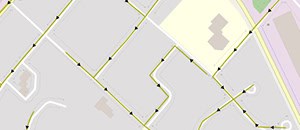
Location
Locate the access points (manholes).
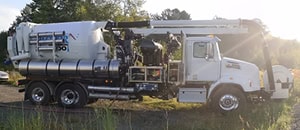
Cleaning
Cleaning the pipeline with a sewer cleaning truck equipped with a high-pressure cleaning nozzle.
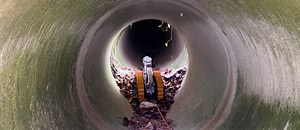
Inspection
Traction of the camera along the length of the pipe to be inspected.
Data capturing/visualization of the pipeline condition.

Analysis and report issuance
Images are transmitted to our analysts, enabling the drafting of a report on structural and operational defects of the pipeline.
Non-exhaustive examples of defects that can be identified by our analysts:
Structural defects:
- Fractures (cracked concrete, broken plastic)
- Missing mortar
- Deformations
- Detached lining
Operational defects:
- Deposits (sand/gravel)
- Grease/encrustation/infiltration
- Roots
When should you inspect pipelines?
To ensure system integrity and prevent potential damage to infrastructures, it is recommended that municipalities inspect their sewer networks at least every 5 years. Some indicators may justify earlier inspections, including:
Our tools
Choosing Can-Explore for your sewer network inspection and cleaning needs means benefiting from advanced technology and unmatched expertise, ensuring the reliability and efficiency of your infrastructures:
ZIPCAM 360
Can-Explore’s ZIPCAM 360 represents a true advancement in sewer network inspection. This innovation allows for the combination of cleaning and inspection in a single operation, effectively halving the time required for these tasks.
The result: reduced traffic disruptions that minimize inconveniences for citizens by allowing a quicker resumption of urban activities, and a significant reduction in labor costs.
Discover the unmatched performance of the ZIPCAM 360 by visiting our website, or contact us for more details.
Our Other Cameras:
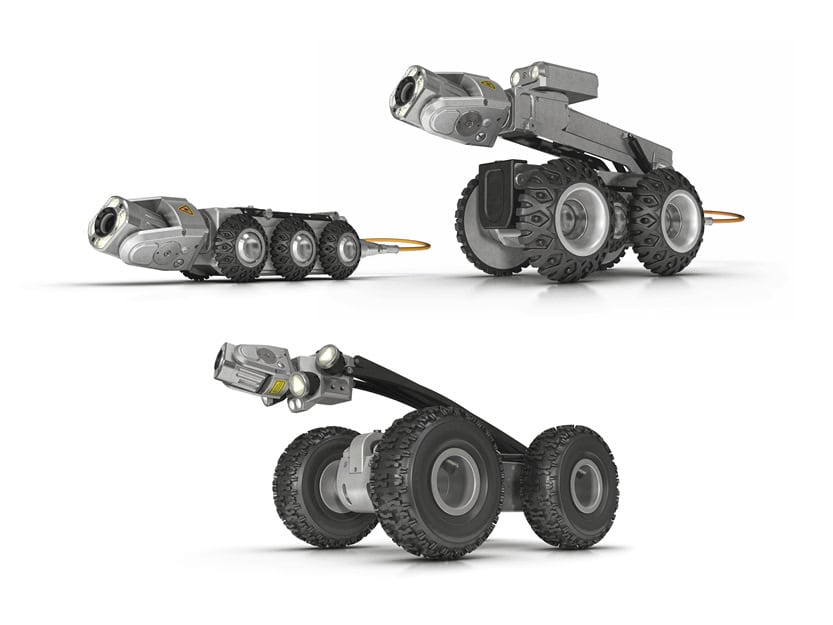
Image: Envirosight
Robotic closed-circuit television camera (CCTV) (100 mm and +)
Our self-propelled cameras are ideal for inspecting pipes with diameters from 100 mm to 1,800 mm (4 to 70 inches). They have the advantage of being modular according to the types of pipes to be inspected and are equipped with standard cameras.
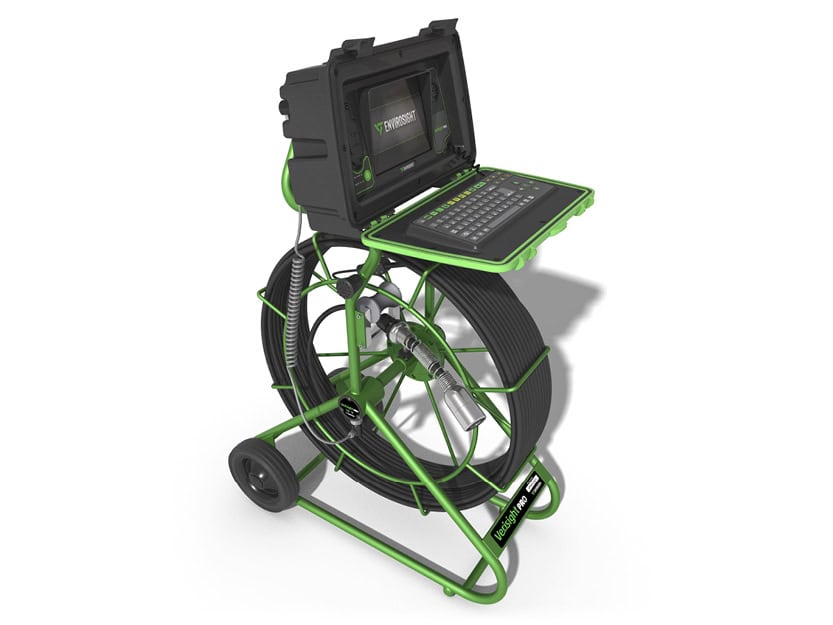
Image: Envirosight
Drain camera (50 mm to 200 mm)
Drain cameras are ideal for inspecting small-diameter pipes (between 50 to 200 mm, or 2 to 8 inches) with bends, typically found in buildings. Also called pushcam or fisher camera, the device is a camera fixed to a cable wound on a reel, which is manually inserted and pushed through the pipe to be inspected.
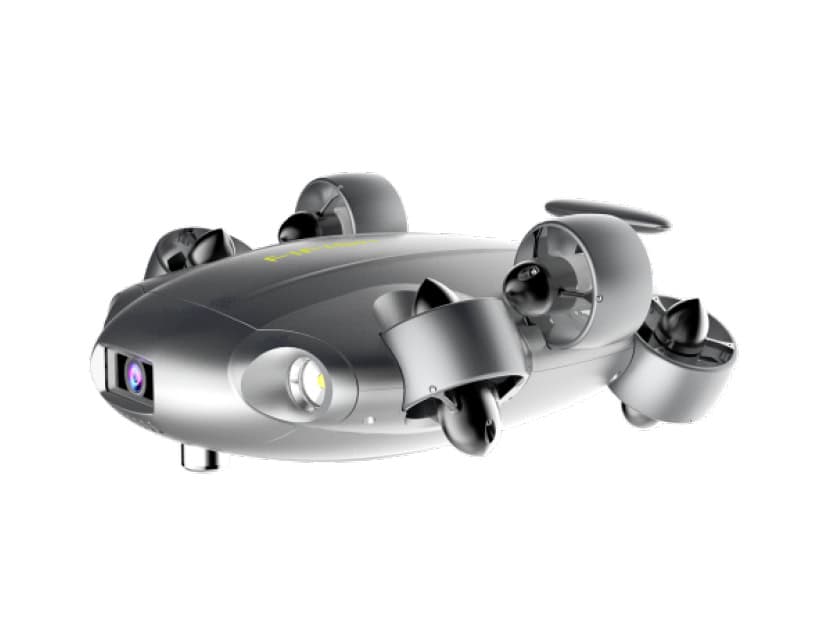
Image: QYSEA
Underwater camera (250 mm or larger)
Our underwater cameras are specifically designed for inspecting water intake pipes with diameters of 250 mm (10 inches) or larger, as well as submerged pipelines and water tanks. These cameras are equipped with small turbines for navigation in underwater environments and can be fitted with floaters.
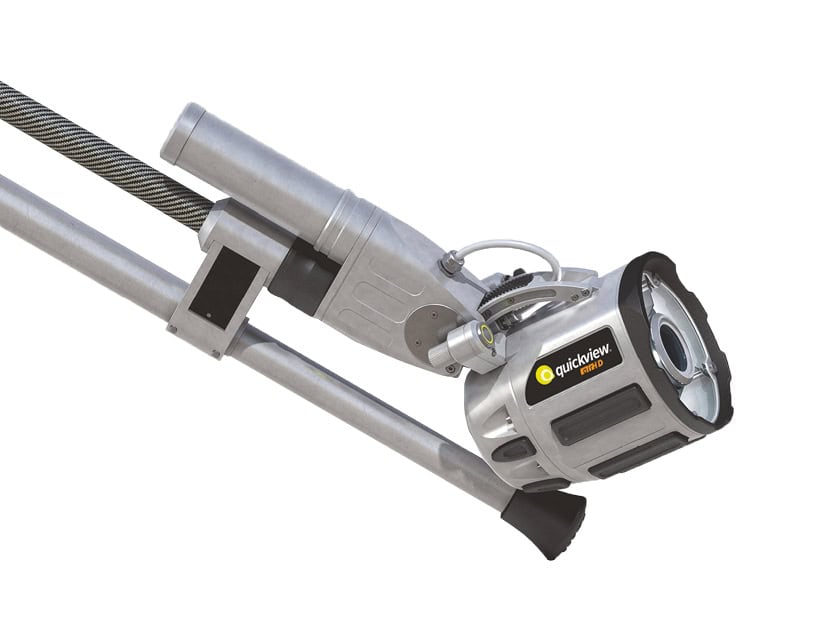
Image: Envirosight
Telephoto lens camera
Our telephoto lens cameras are ideal for inspecting straight-line pipes or those with very few deviations. Unlike self-propelled cameras, they do not move within the pipe but are equipped with a 432X magnifying lens. These cameras can take really high-resolution video or photographs of the inside of pipes from a fixed viewpoint. They are ideal for quick inspections of segments up to 120 meters (400 feet) long.
Submerged pipelines inspection by camera
Can-Explore offers a specialized service in the inspection of submerged pipelines, essential for assessing the integrity of aquatic and underground infrastructures without draining the systems. Our experts conduct detailed assessments of pipeline conditions, identifying potential issues such as leaks, corrosion, or obstructions without necessarily resorting to divers, although this may be unavoidable in some cases.
This service uses advanced technologies such as underwater cameras to inspect pipes that are practically inaccessible, especially in aquatic environments and coastal areas. Underwater pipeline inspection by camera offers a much less expensive inspection in terms of resources and time, while minimizing inconveniences to users who might be deprived of running water for an extended period.
Floods and climate change resilience
Floods are often caused by poorly maintained or undersized pipelines that lead to overflows in sensitive areas such as shopping center parking lots, and especially in flood-prone areas. When flow is limited, even moderate rainfall can saturate infrastructures, creating an increased risk of disasters.
Can-Explore offers inspection, cleaning, and pipe reaming services to identify and resolve these issues before they become critical. Our experts can assess the infrastructure condition post-disaster, produce a detailed report, locate network weaknesses, and restore infrastructure hydraulic capacity to 100%. By aligning our services with the challenges posed by climate change, we contribute to strengthening your water drainage system’s resilience.
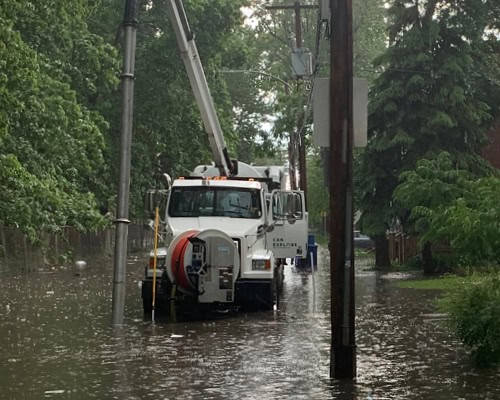
Prevent flood risks and enhance your infrastructures’ resilience. Contact our specialists for a comprehensive audit of your systems.
In case of litigation related to flooding, find out how our legal expertise in urban hydraulics can assist you in protecting your interests. Learn more about our legal expertise services.
Complementary services for efficient sewer networks
Can-Explore offers a complete range of services to ensure the performance and longevity of your underground infrastructures. Our targeted interventions help maintain sewer network efficiency, prevent malfunctions, and optimize pipeline management. These essential services include:
Standards, Reports, and Additional Documentation
Standards and reports
Our inspections are certified under the Pipeline Assessment and Certification Program (PACP) of the National Association of Sewer Service Companies (NASSCO). They are thus compliant with the standards set by the Bureau de Normalisation du Québec (BNQ), including standards BNQ 1809-300 and BNQ 3680-125. With our license from the Régie du bâtiment du Québec (RBQ) as a General Contractor, 1.4 Roads and Mains (number: 5718-4566-01), Can-Explore can also act as a construction contractor by submitting bids, executing, and/or contracting construction work for others.
Reports issued by our water engineers, members of the Order of Engineers of Quebec (OIQ), are produced following inspection work in accordance with prescribed standards. Can-Explore uses innovative solutions developed by Can-Ex Technologies which allow to produce reports that meet the highest North American industry standards.
Our cameras are fully compliant with standards BNQ 3680-125/2013 | CCTV inspection of sewer pipes and manholes.
Additional documentation - Useful links and downloads
Quick Quote Request: Sewer Network Inspection/Cleaning
FAQ
What length of pipelines can you inspect?
We can inspect pipelines of all lengths and sizes, whether small segments or extensive networks. With our cutting-edge inspection tools, we can cover large distances quickly while maintaining optimal inspection quality.
Can you act quickly in case of an emergency?
Yes absolutely. We understand that some situations require immediate response. Our team is trained to respond quickly to urgent requests, depending on the project’s location. We are always committed to providing efficient and rapid service to minimize service interruptions.
Do you offer a personalized service?
Yes, our expertise is based on our ability to provide innovative and personalized solutions. Each project is unique, and we adapt to each client’s specific needs, many of whom are referred to us because of our ability to handle complex or unusual requests. We work closely with you to design a tailored solution that perfectly aligns with your requirements and constraints.
Any question?
Feel free to contact us. Our solutions are tailored to your needs.


